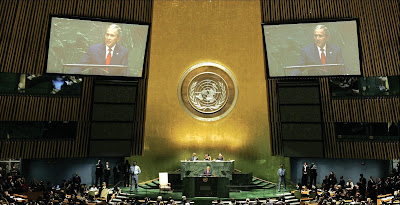36TH Full Time Programme In Planning & Entrepreneu...
South-South cooperation is in the realm of fantasy
Post
 World War II, history of the world was marked by the decimation of political imperialism. Several countries in Asia and Africa that gained independence from the European powers were mired in poverty and destitution. Much needed economic aid and support to them, however, was illusory. The Bretton woods agreement that gave birth to the international financial institutions like the World Bank and the IMF, were forthcoming in charting the economic growth trajectory of the European countries devastated by war. But for the third world, they continued as the imperialist arm of the developed countries.
World War II, history of the world was marked by the decimation of political imperialism. Several countries in Asia and Africa that gained independence from the European powers were mired in poverty and destitution. Much needed economic aid and support to them, however, was illusory. The Bretton woods agreement that gave birth to the international financial institutions like the World Bank and the IMF, were forthcoming in charting the economic growth trajectory of the European countries devastated by war. But for the third world, they continued as the imperialist arm of the developed countries.The South-South cooperation (SSC) that envisioned economic cooperation among the developing countries then emerged as a serious challenge to the North-dominated economic relations. The United Nations created a special unit for SSC in late 1970s and the Non- Aligned Movement established a group of South-South coordination in 1989. The SSC demanded increased cooperation between the newly industrialised countries and higher investment flow among them. The concept was important for several reasons. Firstly, it could help develop the under-developed regions of the world, and secondly, such a model of development lacked the cultural, political and military hegemonic overtures that marked the First world conceptualized ‘Globalisation’. This cooperation among the developing countries has been resented precisely because of these reasons and the undercurrent of opposition to the concept has ensured that such initiatives are not allowed to take off.
During the past decade, the number of transnational investment agreements among the developing countries has increased immensely. The number of bilateral investment treaties among the developing countries has grown from 47 in 1990 to 603 in 2004 (that included 107 countries). Similarly, preferential trade agreements have also increased in intensity among the developing countries (122 countries during 1990s). But if the quantum of investments are compared, they stand nowhere in front of the developed countries. Also, the differences between the financial might of the G-15 and the G-8 have been too glaring to ignore. Even the chinks in the arm our of the developing countries have been revealing. For example, Chinese clam our for oil blocks across the globe has most oft en competed against India, even when both of them are developing countries.
SSC has a great potential against oppressive globalisation led by the First World. But for that, developing countries will have to cooperate and not compete against each other.
For Complete IIPM Article, Click on IIPM Article
Source : IIPM Editorial, 2007
An IIPM and Professor Arindam Chaudhuri (Renowned Management Guru and Economist) Initiative
For More IIPM Article, Visit Below....
IIPM RANKED AHEAD OF FIVE OF THE IIMS
The Business of B-School Rankings & The Big Farce
A beach resort… Come for a month, at least
IIPM ABOUT :- IIPM KNOWLEDGE CENTER
Topic: India – China: A Growth Comparison
Who says US is on the brink of a recession?...
Thanda karta sabko ek
IIPM Infrastructure : Campus
HRIC :- Human Resource Intelligence Cell
No comments:
Post a Comment